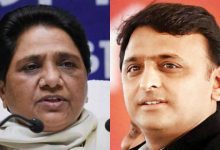Instead of expanding the base the BJP seems to have lost both Andhra Pradesh and Telangana. Will this mar the expansionist vision of the BJP in the South? Here’s a political analysis, for Different Truths.
Now that the Telugu Desam Party (TDP) has pulled out its ministers from the Modi cabinet for not protecting the interests of Andhra Pradesh, what happens to the BJP’s ambition of conquering the southern states? The BJP chief Amit Shah said after winning the three northeastern states recently, “Till the (BJP) governments are formed in Odisha, West Bengal and Kerala, till the time we win Karnataka, the golden period is yet to come.” No doubt Andhra Pradesh was the only state where the party was ruling as a coalition partner in the south although it has been making efforts to penetrate the other southern states. Karnataka was the first gateway for the BJP in 2008 when it formed its first government in the south but it frittered away the goodwill. The 2014 gains were largely attributed to Modi wave.
Instead of expanding the base the BJP seems to have lost both Andhra Pradesh and Telangana. Only last week the Telangana chief minister K. Chandrasekhar Rao (KCR) announced that he was willing to lead a non-BJP, non-Congress Third Front. BJP continues to be a marginal player in Andhra Pradesh. Traditionally, after the formation of BJP in 1980, it tried to expand but when film star turned politician N.T. Rama Rao entered the political scene in 1982, the BJP lost what little space it had.
Once Chandrababu Naidu became the chief minister after deposing his father-in-law NTR in 1995, Congress and TDP alternated power between them. Naidu supported the NDA government from 1998 to 2004. The BJP also improved and won 20 per cent vote share and four seats, two each from coastal Andhra and Telangana on its own in 1998 elections where Kapus and Rajus were moving towards BJP. The BJP again aligned with the TDP in 2014. Now, Naidu has cleverly made the Modi government as the villain and has also frustrated the BJP’s intention of aligning with the YSR Congress. As the caste factor plays a more important role than religion, the dominant group in Rayalaseema region prefers YSR Congress, while the two dominant groups in Coastal Andhra prefer the TDP.
In Telangana, KCR has weakened the opposition. Though it supported the cause, the BJP lost a golden opportunity during the Telangana movement as the chief minister appropriated all the credit for the bifurcation. Today, the TRS and the Congress are the dominant parties while left, BJP and AIMIM play a minor role. Moreover, there isn’t any leader who can match KCR. The BJP has only five MLAs but has declared its ambitious goal of Mission 60 in 2019 Assembly polls.
As for Karnataka, the BJP hopes to snatch the state from the Congress. The BJP, Congress and the JD (S) are the three major parties. The JD (S), which is mostly confined to Mysore, has the support of the Vokkalingas. In other regions that account for 190 constituencies, there is a direct fight between BJP and Congress. The BJP plans to make full use of its social engineering, caste combination, and money and muscle power. For the Congress too, it is a life and death battle, because if it loses this southern state, it will be zero in the south, after losing the northeast.
Kerala with its multi-religious social landscape has always been elusive for the BJP. It has 53 percent Hindus, 28 percent Muslims and 19 percent Christians. The BJP has gone up to 10 percent vote share and is very much visible now. So far the two fronts – LDF led by the Left parties and the UDF by the Congress – have been alternating in power. The frequent clashes between the ruling CPI-M and the BJP workers have spoiled the atmosphere. How much the BJP can gain before the 2019 polls has to be seen.
Tamil Nadu is a key state with 39 seats. There is a political vacuum after the death of chief minister J. Jayalalithaa in 2016 and the DMK chief M Karunanidhi taking a back seat due to ill health. Two Dravidian parties – the AIADMK and the DMK-have dominated the political scene since 1967. Then there are minor players like DMDK, MDMK, PMK, VCK and smaller caste based parties. Even the Congress over the years has degenerated. Two films stars – Rajnikanth and Kamal Haasan have entered politics. While propping up AIADMK government, the BJP is also trying to consolidate its support in the state by wooing the OBC community. The AIADMK, traditionally, enjoyed the support of Gounders and Thevars while the DMK dominates northern districts with the support of the Vanniyars. Kongunadu Jananayaka Katchi (KJK), the Gounders-based party has merged with its ally BJP. The BJP has limited presence in two or three districts. BJP is supporting Rajinikanth, but all parties face a leadership crisis.
The BJP knows that if it wants to expand its footprint in the south it needs to have more allies and strong state leaders. At present it is not relevant in any of these four states, except Karnataka. How it will go about getting more allies and charismatic leaders is to be seen. All options are open for all the players before the polls. Ultimately it is the arithmetic, which matters in elections these days.
Kalyani Shankar
©IPA Service
Photo from the Internet





 By
By

